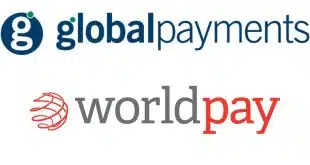Changes in consumer shopping behavior and new ways for companies to measure how they deliver a service are providing a boost in subscription billing, especially as cloud-based services become more mainstream.
“The size of the subscription-billing service market is exploding with the advent of cloud-billing solutions being offered as a software-as-a-solution service,” Michael Moeser, director of payments at Javelin Strategy & Research, tells Digital Transactions News via email. “It is being sold to not only large, high-volume billers, but also for small and medium-size businesses.”
Now, with new technology, what once had been the province of large, enterprise-level billers is becoming scalable to smaller companies, he says. “Leveraging new technologies along with cloud-based services have dramatically dropped the barrier to entry for both companies wanting to offer the service and companies wanting to buy the service.”
A recent Forrester Research Inc. report reviewed eight of the top subscription billing providers targeting enterprise-level clients. It also looked at the potential for payment-service providers. Forrester says Aria Systems Inc., SAP hyrbis, and Zuora Inc. collectively manage almost $300 billion in subscription-billing revenue for their clients.
One of these vendors is San Francisco-based Recurly Inc.
“What we’re seeing is that consumers are actually becoming more and more loyal to vendors that provide greater service and support,” Fred Felman, Recurly chief marketing officer, tells Digital Transactions News.
That is evidenced in how consumers use their mobile devices, such as smart phones and tablets, Felman says. “Many providers have tailored their Web user-interface experiences to mobile,” he says. “That’s where we are seeing the most traction.”
Behaviorally, consumers are becoming used to subscription billing, with the advent recurring payments not only for entertainment services, like Netflix or Hulu, but also with sundries like shaving supplies. That’s driven by consumers’ desire to save time, Felman says. It’s that reliance on the consistent delivery of goods and services that boosts consumer confidence in the subscription-billing model, Felman says.
The software-as-a-service model most familiar to software providers is permeating other industries, says Fergus O’Reilly, global vice president for solution strategy at hybris and SAP customer engagement and commerce. Hybris is a unit of Germany-based SAP.
Now, consumer-goods companies and sometimes retailers that sell their goods may adopt a subscription-payment method, O’Reilly says. For example, a sportswear manufacturer might install a pedometer in shoes and a heart-rate monitor in sports tops. A consumer could pay a monthly fee to subscribe to all of the data and view it in one place. “The data itself becomes an asset, which companies can then sell and mine for extra value,” O’Reilly says.
Subscription billing, in particular, is popular in business-to-business payments, O’Reilly says. Every company is trying to figure out its strategy to contend with the digital transformation and how their products fit into the emerging Internet of Things, a concept that sees devices communicating with one another via an Internet connection.
“When you have the ability to measure what the device is doing for customers, you have the ability to charge,” O’Reilly says.





